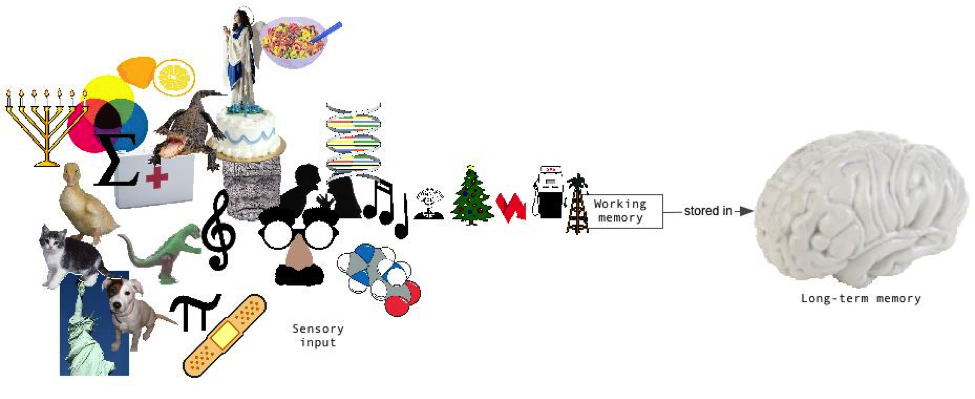This post is written by Mary Chase, Ph.D., an expert in curriculum design, literacy education, and technology integration.
In an earlier post, we explored the importance of dual coding in learning and retention. In short, when information is encoded in the brain both visually and verbally (that is, in the kinds of maps we create using Ideaphora) learning is enhanced. Dual coding facilitates making connections, understanding relationships, and recalling related details. Related to dual coding theory is John Sweller’s (1994) “cognitive load” theory. Sweller states that information may only be stored in long-term memory after first being attended to, and processed by, working memory.
Working memory filters the staggering amount of information our brain is exposed to at any moment; it is extremely limited in both capacity and duration—about 7 items of information for about 30 seconds. These 7 items can be either separate pieces of data or, more importantly, “chunks” of related information that have been encoded together.

Here’s a way to understand this phenomenon. Imagine you are a passenger in one of thousands of cars on a four-lane highway. Ahead, the road narrows to one lane, and each car must pass through one by one. Imagine, too, that your car also holds other passengers. All of you drive through at once.
If working memory is like a narrow passage on a highway, dual-coded information is like a carpool. It is treated as a single unit and passes through the bottleneck with the same ease.
Obviously, it’s more efficient for items of information to be chunked rather than dealt with individually. Combining visual and verbal modes of instruction reduces the burden on working memory (the cognitive load), expanding the brain’s ability to learn information. When students use Ideaphora to configure and connect information, it becomes dual coded and is, therefore, more likely to be available in long-term memory.
Let’s try it!
Remember this experiment from an earlier post?
“Try working with another teacher using the same text. Assign reading the material to both classes. One class will only read the material. The other class will read, and then use Ideaphora to map the information. Administer the same test of recall to both classes and see the results. And please—let us know how it goes!”
Let’s try it again, but this time, test both groups again after two weeks. Which did better?
To run this experiment with your students, sign up for Ideaphora's free Classroom Pilot program. Current and future Classroom Pilot members can sign up for the Connecting Knowledge Grants. Awards include cash stipeds and free subscriptions.
